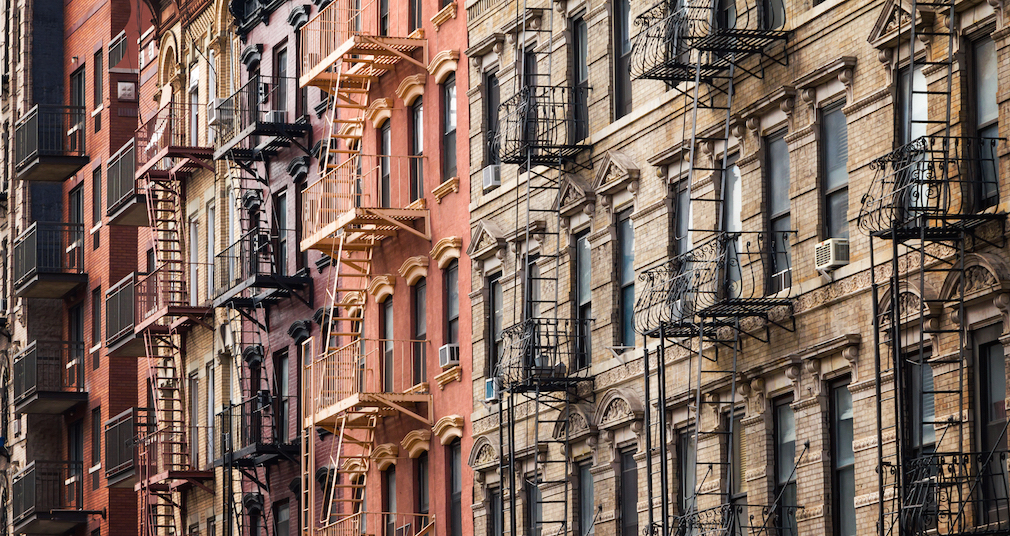New York City is in the middle of an affordability crisis, and now, the city is proposing sweeping new rules to address one piece of the affordability crunch that often stands in the way of renters finding a quality apartment or moving to a new one – the security deposit.
Newly released data from RentCafé and Yardi Matrix shows that the average rent in Manhattan recently surpassed $4,000 per month, meaning prospective renters would have to save up $4,000 or more to use as their security deposit.
And often, renters can’t use that money at any point during the tenancy and they frequently don’t get that money back.
And that’s a problem, according to New York City Comptroller Scott Stringer.
Over the weekend, Stringer released a new proposal that would change the city’s policies surrounding security deposits and put limits on how much landlords can charge renters upfront.
Stringer’s proposal would limit security deposits to one month’s rent on a one-year lease for all units in New York City. Currently, rent-regulated units in the city are limited to one month’s rent as a security deposit, but the proposal would expand this rule to all units.
“Every day, New Yorkers are working harder and saving less – and right now, huge portions of their annual incomes are being held hostage in security deposits. These may just be considered the costs of being a renter in New York, but it’s not right and it’s not necessary,” Stringer said in a statement.
“To tackle our mounting affordability crisis, we need to think outside the box and put bold ideas into action,” Stringer added. “Our proposals will change the rules of the housing market and put money back in the pockets of thousands of families looking for a bigger apartment in a better school district, to new graduates who have to find a place to live while paying down their student loans.”
In conjunction with releasing the newly proposed rules, Stringer’s office also released a report about security deposits, which showed that New York City renters had to fork over approximately $507 million into security deposits in 2016.
In some cases, the upfront cost of moving to a new apartment can be more than 20% of a household’s yearly income, Stringer’s office noted. Oftentimes, landlords require tenants with low income or questionable credit to put up multiple months’ rent in a security deposit.
According to Stringer, freeing up that money would be “transformative” to the city’s residents, which have savings rates that are among the lowest in the nation.
“For too long, the deck has been stacked against New York’s working-class renters, but we’re taking a step forward to reimagine how the housing system works in our City,” Stringer said.
Stringer notes that while it’s “important” for landlords to have protection against damages or unpaid rent, there may be other options other than a cash deposit.
Therefore, in addition to capping the amount a landlord can charge for a security deposit, Stringer’s proposal would open up renters’ security deposit options beyond paying a full month’s rent upfront to include installment plans and using insurance as a security deposit alternative.
Under the installment plan, for example, tenants would have to pay in increments rather than paying the full month’s rent prior to moving in.
As Stringer’s office notes, in Seattle, renters are allowed to pay in six installments, meaning a tenant is able to add $300 to their first six rental payments, rather than paying $1,800 in an upfront deposit, for example.
Stringer notes that this installment model can also be extended to other upfront costs, like pet deposits, last month’s rent and move-in fees.
Additionally, Stringer proposes using insurance as a security deposit alternative.
“A number of local companies have introduced an insurance alternative in recent years. These startups allow renters to pay a small monthly or one-time fee in exchange for guaranteeing their security deposit with landlords,” Stringer’s office notes.
“While tenants will not receive this money back – as they would with a traditional deposit – paying $10 per month to insure your apartment against damages rather than an $1,800 security deposit is a significant reduction in the upfront costs of moving and can be a desirable trade-off,” Stringer’s office continues. “Moreover, tenants who have already paid their security deposits can request that it be returned and can switch to the monthly payment, insurance model instead.”
Rhino, a company that provides the security deposit insurance, welcomed Stringer’s proposal.
“All too often we see regulation slowing down the pace of change and innovation in industry. Comptroller Stringer’s announcement today, including insurance alternatives like Rhino in security deposit reform, is a great example of government flipping the script and truly leading by example,” said Paraag Sarva, Rhino co-founder and CEO. “We applaud Comptroller Stringer’s effort to give New Yorkers more choices, making the challenging rental process easier and more accessible for everyone through the adoption of new solutions like Rhino.”
But those aren’t the only changes Stringer is calling for.
Stringer also proposed changes to what landlords can do with security deposit funds after a renter moves out.
According to Stringer’s office, security deposits are “too often” withheld from tenants at the end of a lease for “arbitrary, unexplained or fraudulent reasons.”
To combat this issue, Stringer is calling for a plan modeled after England’s rental rules, which would create a tenant protection system wherein security deposits are held by a third-party custodian and arbiter instead of the landlord.
“If the landlord wishes to withhold money for damages, cleaning fees or unpaid rent at the end of a lease, they must come to an agreement with the tenant,” Stringer’s office notes. “In instances where there is a dispute over damages or the cost of repairs, the landlord and tenant can utilize the dispute resolution service run by the third-party organizations that hold deposits.”
Stringer’s proposal now moves to the New York state government for consideration.







